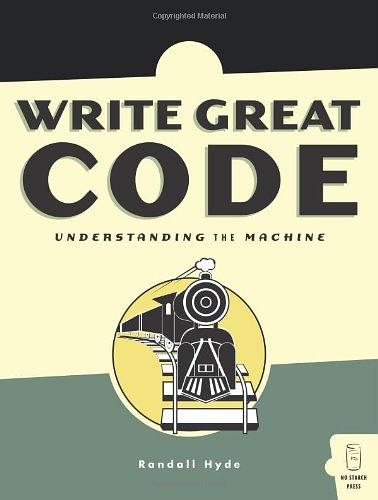
书名:Write Great CodeVolume1:UnderstandingtheMachine
作者:RandallHyde
译者:
ISBN:9781593270032
出版社:NoStarchPress
出版时间:2004-10-25
格式:epub/mobi/azw3/pdf
页数:440
豆瓣评分:
书籍简介:
If you've asked someone the secret to writing efficient, well-written software, the answer that you've probably gotten is "learn assembly language programming." By learning assembly language programming, you learn how the machine really operates and that knowledge will help you write better high-level language code. A dirty little secret assembly language programmers rarely admit to, however, is that what you really need to learn is machine organization, not assembly language programming. Write Great Code Vol I, the first in a series from assembly language expert Randall Hyde, dives right into machine organization without the extra overhead of learning assembly language programming at the same time. And since Write Great Code Vol I concentrates on the machine organization, not assembly language, the reader will learn in greater depth those subjects that are language-independent and of concern to a high level language programmer. Write Great Code Vol I will help programmers make wiser choices with respect to programming statements and data types when writing software, no matter which language they use.
作者简介:
Randall Hyde is the author of The Art of Assembly Language, one of the most highly recommended resources on assembly, and Write Great Code, Volume 2. He is also the co-author of The Waite Group's MASM 6.0 Bible. He has written for Dr. Dobb's Journal and Byte, as well as professional journals. His website is available here.
书友短评:
@ Ryutlis 很底层,是一个很好的入门书籍,读完之后会想读更深的书 @ Ryutlis 很底层,是一个很好的入门书籍,读完之后会想读更深的书
Chapter 1: What You Need to Know to Write Great Code
Chapter 2: Numeric Representation
Chapter 3: Binary Arithmetic and Bit Operations
Chapter 4: Floating Point Representation
Chapter 5: Character Representation
Chapter 6: Memory Organization and Access
Chapter 7: Composite Data Types and Memory Objects
Chapter 8: Boolean Logic and Digital Design
Chapter 9: CPU Architecture
Chapter 10: Instruction Set Architecture
Chapter 11: Memory Architecture and Organization
Chapter 12: Input and Output (I/O)
Thinking Low-Level, Writing High-Level
Appendix A: ASCII Character Set
· · · · · ·
添加微信公众号:好书天下获取
 好书天下
好书天下
评论前必须登录!
注册